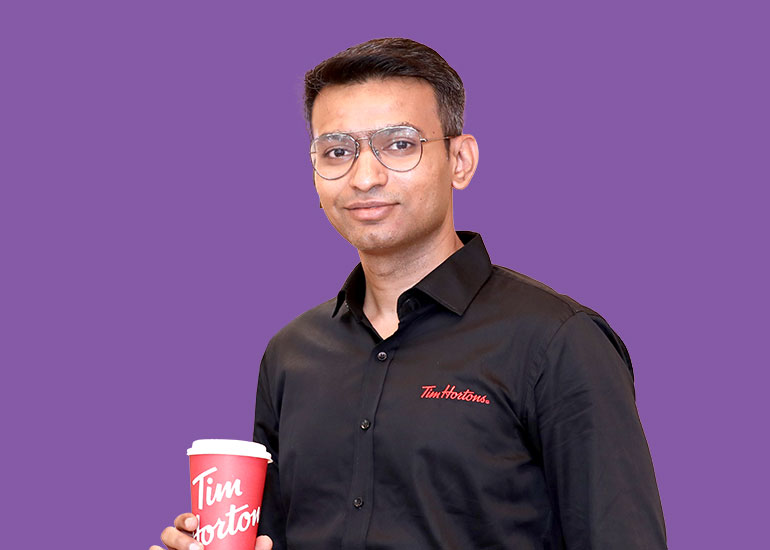Q] Tim Hortons has been making a lot of noise since its launch. Please share a few insights on the aggressive penetration.
We did a lot of research before the launch, and we realized that there is a bit of an awareness about the brand. It’s not that Tim Hortons was ubiquitously known, but the brand is very popular abroad, and it is quite strong in the GCC market in Dubai. So, there was an underlying awareness. It has a fair amount of traction, and all we needed to do was fuel the fire. Now in India, the cafe category is moving into the lifestyle space, and there is an Instagrammable value to the cup that I’m holding. So, as part of the preview, we invited influencers for a brand experience. We gave them a preview of what would Tim Hortons in India look like, and the response we got was fabulous. What happened was that a bit of FOMO got cleared as people said that the brand is finally here for us to try, ‘We need to go to Tim Hortons.’ We also customized our strategy depending on where we are launching. So, let’s say when we were launching in Punjab and Chandigarh was our first store, we hosted a Bhangra dance outside of our store because you have to be part of the cultural fabric.
Q] What is the brand’s media plan?
We have an omnichannel presence in terms of media channels with Gen Z and millennials as obvious choices of TG. These are the people who are trying to experience more cafes and international brands. But we also leverage Print, Radio, and Out-of-Home purely from a reach perspective. For example, all launches were influencer-led and digital-led. But when we launched in Mumbai, there was this huge OOH installation on Linking Road where there are about seven hoardings and we took all of them to announce that Tim Hortons is here. This gave us a wider reach. We also leverage print ads whenever we are announcing the opening of a Tim Horton’s store.
Q] What is the share of revenue that’s dedicated to the marketing budget of the brand?
That’s a bit of a trade secret, but I can tell you the approach. We are a growing brand, and for a brand in its growth phase, the advertising-to-sales ratio is higher, and the revenue growth is stabilized because then your kitty becomes larger. So, we follow that sort of a model to say that we need to be between a certain range of advertising-to-spend ratio.
We have spent quite a bit on Swiggy and Zomato as people are ordering food from home rather than going to the store. That channel has become quite lucrative for us. Then there is a certain budget that goes into the overall brand building. So, in a way, if I were to put it simplistically, there are launches, there is Swiggy, Zomato, and brand campaigns.
Q] What is the creative outlook of your brand?
Being a global brand, there has to be what I call, airport philosophy. In the sense that no matter which airport you are at in the world, a global brand should give you the same impression. That’s how memory structures get built in our heads. You go to Dubai, or some western country tomorrow, you will see the same Tim Hortons brand and you build a familiarity. What changes is a bit of narrative, because you need to customize your approach in a way that will resonate with your audience. We have good partners on board, we have Madison who handles our PR, and we have GOZOOP who’s on our retainer for creatives. Both these partners are well attuned to the narrative and visual imagery of the brand.























